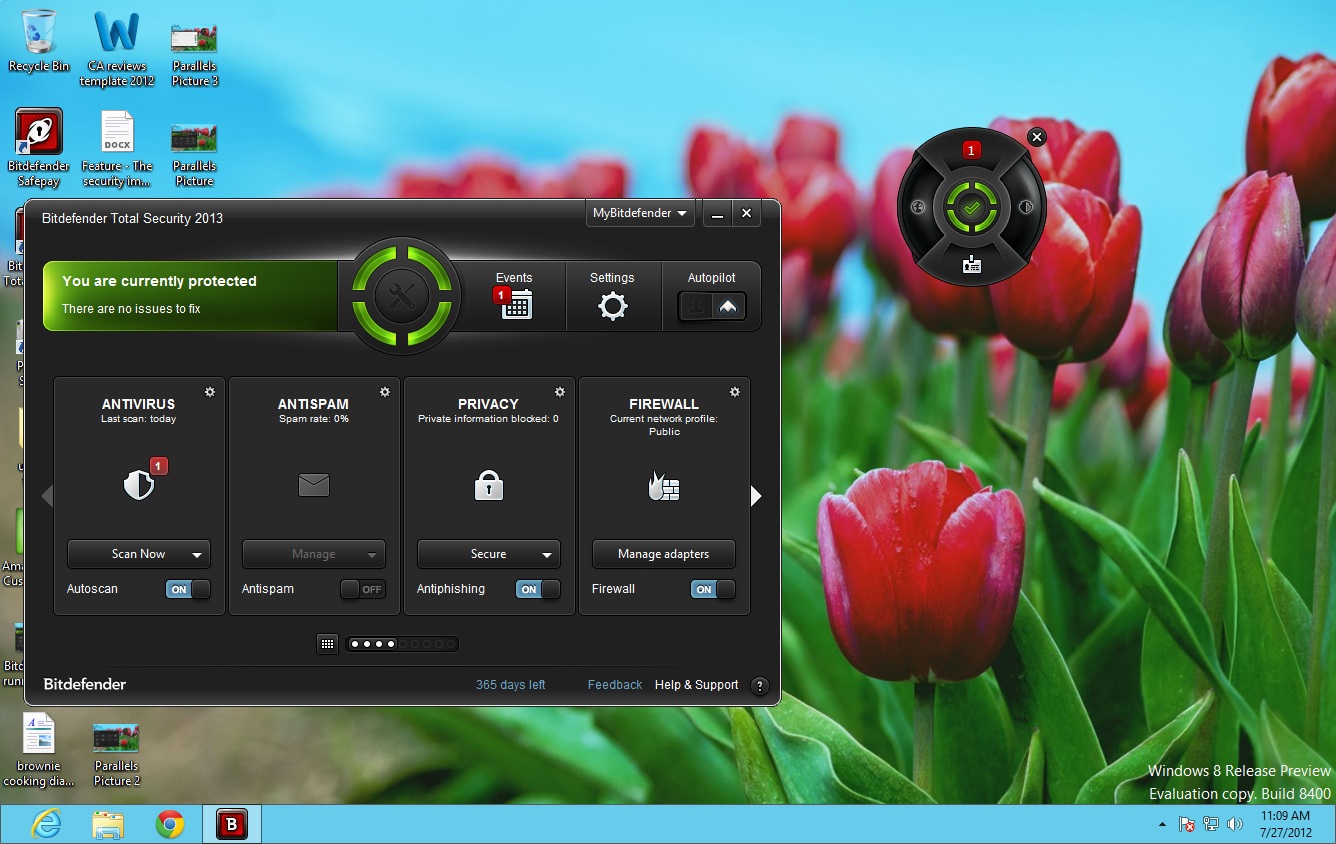Bitdefender Total Security 2013 review
The latest edition of the anti-virus software incorporates remote management tools and introduces Safepay, a feature which aims to safeguard online transactions.
Bitdefender 2013 provides users with the option to automate or tightly monitor protection. The additional payment protection and remote management features make this an excellent all-round product.With the performance and storage features included in the suite, this makes the product a bargain at £54 to protect up to three computers.

Bitdefender Total Security 2013 not only provides anti-virus protection, it comes an online protection tool, anti-theft management features and 2GB of cloud storage.
Upon installation, the suite defaults to an "Autopilot" mode. This makes all the important decisions about protection instead requiring user interaction. In theory a PC running this software should be much more protected against malware as the intelligence is built into the code, rather than the knowledge of the user.
It also means that interaction with the software is kept to a minimum. There is barely a whisper about what the software is doing; no constant display of pop-ups to tell you what has been blocked and why. It just appears to get on with its work while you do likewise.
On start-up, the suite goes about getting ready to protect the PC from threats. It scans the PC and simultaneously downloads updates to the software to protect against current threats. It also shows installation as three progress bars.
Where it does allow interaction is in its "Configure Product Behavior" settings. This allows the user to change how the product protects the system. Again, keeping everything to a minimum, you can turn the Autopilot on or off as well as toggle another setting "Automatic Game mode". This allows users to change settings of the product so that it doesn't interfere with any software the user may running while maintaining security settings on the PC.

Most users will be content with using the Autopilot mode, but power users can tinker with settings
Dashboard
The dashboard allows the user to see the status of the systems and access the product modules. Interaction is kept to a minimum and four initial modules (Anti-virus, Anti-spam, Privacy and Firewall) can be toggled on and off. This is not to say that further customisation is impossible.
Power users can delve deeper into settings to change them, but for the most part the design of the product is aimed at discouraging the user from doing so. On the dashboard there are another six modules that can be accessed by clicking on the left and right icons on the dashboard.
In keeping with aim of making the product accessible to non-power users, a desktop widget can be enabled to alert users of are any pending notification events as well as firewall and antivirus activity.
Get the ITPro daily newsletter
Sign up today and you will receive a free copy of our Future Focus 2025 report - the leading guidance on AI, cybersecurity and other IT challenges as per 700+ senior executives
Rene Millman is a freelance writer and broadcaster who covers cybersecurity, AI, IoT, and the cloud. He also works as a contributing analyst at GigaOm and has previously worked as an analyst for Gartner covering the infrastructure market. He has made numerous television appearances to give his views and expertise on technology trends and companies that affect and shape our lives. You can follow Rene Millman on Twitter.
-
 Westcon-Comstor and Vectra AI launch brace of new channel initiatives
Westcon-Comstor and Vectra AI launch brace of new channel initiativesNews Westcon-Comstor and Vectra AI have announced the launch of two new channel growth initiatives focused on the managed security service provider (MSSP) space and AWS Marketplace.
By Daniel Todd Published
-
 Third time lucky? Microsoft finally begins roll-out of controversial Recall feature
Third time lucky? Microsoft finally begins roll-out of controversial Recall featureNews The Windows Recall feature has been plagued by setbacks and backlash from security professionals
By Emma Woollacott Published
-
 The UK government wants quantum technology out of the lab and in the hands of enterprises
The UK government wants quantum technology out of the lab and in the hands of enterprisesNews The UK government has unveiled plans to invest £121 million in quantum computing projects in an effort to drive real-world applications and adoption rates.
By Emma Woollacott Published